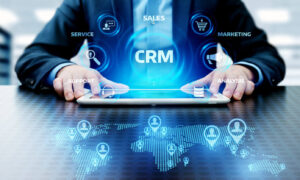In 2024, virtually every small business faced unprecedented challenges due to the Covid-19 global pandemic. Revenue streams, supply chains, customer behavior–there seemed to be disruption at every level. Now, with the arrival of the first vaccines, there’s optimism that the end may be in sight, and it’s time to really focus on what the ‘next to normal’ is going to look like.
To lead your business back to profitability in what is still an uncertain economic climate is going to require a combination of acumen and resilience in each of three phases: the short term (Covid); medium-term (post-Covid), and long-term (shock-proofing and growth).
Here are some of the factors that you might want to consider:
Phase 1: Re-focus on the present reality

Image source: unsplash.com
At the start of the pandemic, there was a real sense of urgency in terms of keeping the business going. After 9 months or so, there’s the danger of ‘Covid fatigue’ setting in. This results in taking the foot off the pedal, being satisfied with survival, and adopting a ‘wait and see’ approach.
Nothing could be more destructive for the long-term health of your business. So, instead, focus on the strength of your relationship with your most important assets – people.
The human touch
As a leader, your optimism and ability to communicate a positive vision of the future is what actually makes the business what it is. Your employees need your emotional and financial to get over this insecure and stressful period. Also, your customers need to know that you’re still ready and waiting to help them.
You probably keep in regular touch with your employees via calls and online meetings. If they’re working remotely, it’s up to you to ensure that the team spirit is maintained and everyone feels that their contribution is important. If overall morale is low, find some fun team-building activities online and build them into virtual group meetings.
Continue making time for 1-on-1 calls with each employee just to check that they’re OK in their new working environment (i.e., often a small living space with kids to distract them).
In addition to calling clients (a no-brainer), consider posting short informational or just fun videos updating clients and potential clients on how you’re responding and invite them to engage and interact. Use all available social media channels to keep interested high and strengthen relationships with existing and potential clients.
Phase 2: Plan your recovery

Image source: unsplash.com
With the end of the pandemic insight, even though the timeline isn’t clear, it’s time to start planning your strategy for recovery.
Use multiple analytics
So much has been disrupted. This means that it’s a moment to focus on analysis–trends in consumer behavior, economic forecasts, changes in business models, and innovations in technology are all going to impact your business landscape. Is your current model even sustainable anymore? If not, how are you going to transform for you to sustain and thrive?
If you’ve been operating at a survival level for the past year, are you ready for a possible surge in demand for your products and services? In addition to conducting primary research with clients and future clients, make use of digital analytics to help understand underlying shifts in behavior, ensuring you’re ready to respond appropriately.
Make your leadership known
As a small business owner, it’s also the moment to ensure you’re a highly visible presence in the local community. Press releases, interviews on local radio and TV stations, networking with business groups, posting on Linkedin and other social media platforms, all of these can help raise your profile. Perhaps, increase your physical presence at outdoor events with a highly-visible and easily-transportable marquee printed with your branding from Australian suppliers such as technishelter.com.au. Just because you’ve never done things this way before, it doesn’t mean you shouldn’t try as you go forward.
Phase 3: Plan for growth

Image source: unsplash.com
In addition to re-establishing the business after the pandemic, the reflection and long-term planning phases will start.
To thrive and grow, the lessons that 2024 taught us all need to be considered and incorporated into the way your business is organized and run. Once you’ve demonstrated that your business is resilient enough to survive the worst, it’s time to consider how to future-proof it. It won’t be enough to stand still though. You also want to ensure that whatever structure or process you put in place will be scalable and enable long-term growth.
Are the changes you were perhaps forced to make in 2024, such as a shift from office to remote working, sustainable and desirable? How do those people who are directly affected by the transformations in their working lives feel? Will cutting costs via an online workforce rather than having them in a central physical location be viable and effective in the long term? What are the implications for training, work allocation, engagement with your company?
What impact could shifting to a remote working environment have on your recruitment pool? For example, if you need to hire data entry clerks or a marketing team, do they even need to be in your country? Do you need to hire full-time employees or could you use freelancers from around the globe for certain tasks?
On the other hand, if your employees are in an environment where they need to interact directly with customers, such as in a restaurant or retail space, what changes will you need to make over the long-term to ensure that they stay safe and continue to deliver the standard of service that customers expect?
Post-pandemic, it’s likely that virtually every process in your operation has been disrupted and will need to be rethought and redesigned. This will require time, strength, and visionary leadership.
Once again, analyzing all available data, whether digital or via engagement with your stakeholders, will allow you to visualize your future, creating a clearly-defined road map to guide you successfully through the ‘next to normal.’+
If you’re looking for serious business growth, Search engine optimization or SEO is a strategy for you. WebSwiggy provides expert search engine optimization or SEO services for large-scale, medium and small businesses.

























